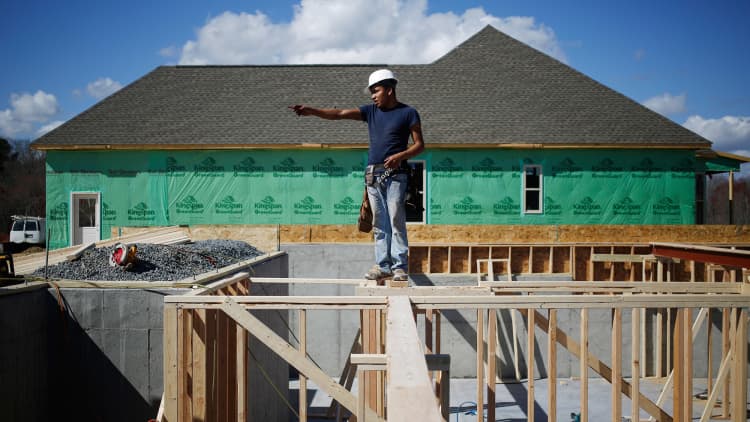
This spring may be one of the hottest sellers' markets in history, but even off-the-chart-demand can't put every potential buyer in a home of their own.
If the house is too expensive for the region's demand, it won't sell. That is becoming the case in more and more neighborhoods this spring — and is likely behind the first sign that big price gains are starting to shrink.
Home values rose a healthy 6.9 percent in April compared with April 2016, according to a new report from CoreLogic, but that is a drop from the 7.1 percent annual gain in March and the 7 percent gain in February. CoreLogic is also lowering its predictions for annual gains, to 5.1 percent in April 2018.
"I think we are beginning to see it in selected markets," said Frank Nothaft, CoreLogic's chief economist. "You just can't have house prices grow at 7 percent year after year, when income growth is 2-3 percent a year."
The evidence is clearest in the hottest markets, like San Francisco, where April home sales were at their slowest pace in six years. The median price hit another new record, but the annual gains are shrinking. Adjusting for inflation, however, San Francisco home prices are still 7 percent below their peak in June 2006.
The higher end of the market is seeing price gains cool the
Nationally, home prices are reacting to the severe lack of homes for sale, especially on the low end of the market. Demand is heavy, but there is a limit that is slowly being reached in certain markets and even certain neighborhoods. In Washington state, where the supply of homes for sale is at the lowest on record, home prices are up 12 percent annually. In Connecticut, where employment is weakening and major companies have relocated to other states, home supplies are high and prices basically flat.
Those are the extremes. Back in the middle, it's the same story of short supply and strong demand. If mortgage rates finally do move higher, as some have been predicting, affordability will weaken further. Demand will simply come up
"If we ask young people what are the biggest barriers to home ownership, we're not getting answers about, 'Well I've run the math and I think that the financial return is greater by putting the money in my IRA or in my 401(k).' What we get are the economic factors," Jon Spader, senior research associate with Harvard's Joint Center for Housing, said at a recent panel discussion at the Department of Housing and Urban Development. "We get responses about building
Rents are also not rising at near the pace of home prices, leaving younger Americans with less incentive to become homeowners. If younger Americans can't afford to buy, then current homeowners won't be able to sell and move up the chain. Current homeowners also have less incentive to sell if mortgage rates move up because they'd be giving up the record-low rates of the past few years.
"We have the aspiration to become owners very high, but that dream is not being realized," said Lawrence Yun, chief economist for the National Association of Realtors, also speaking on the HUD panel.
The affordability pinch will slowly take the heat out of home prices, but even if gains slowed to 5 percent annually, that is still higher than historical norms and still higher than income growth. Homebuilders are not adding tremendous supply right now, especially not affordable supply, so that is unlikely to help in the short term. It could be several years before builders are back up to historically normal levels of production.


